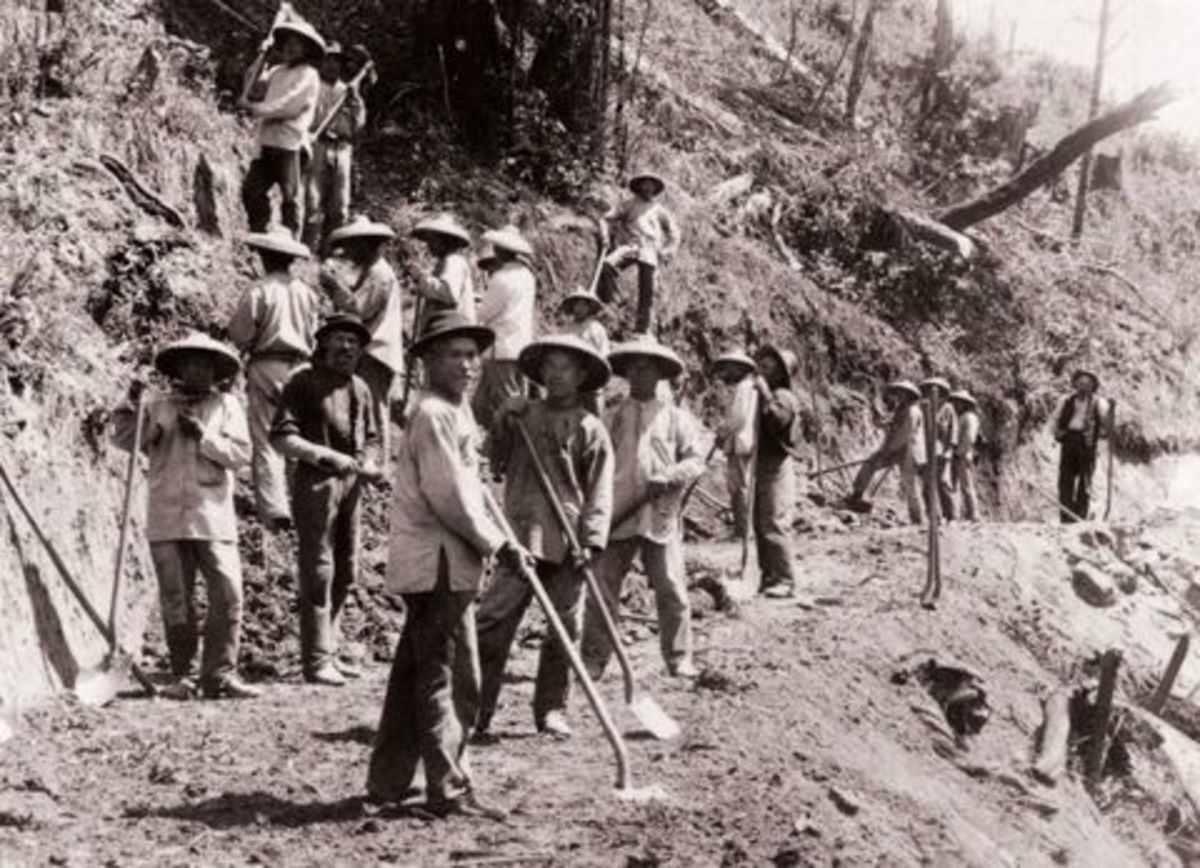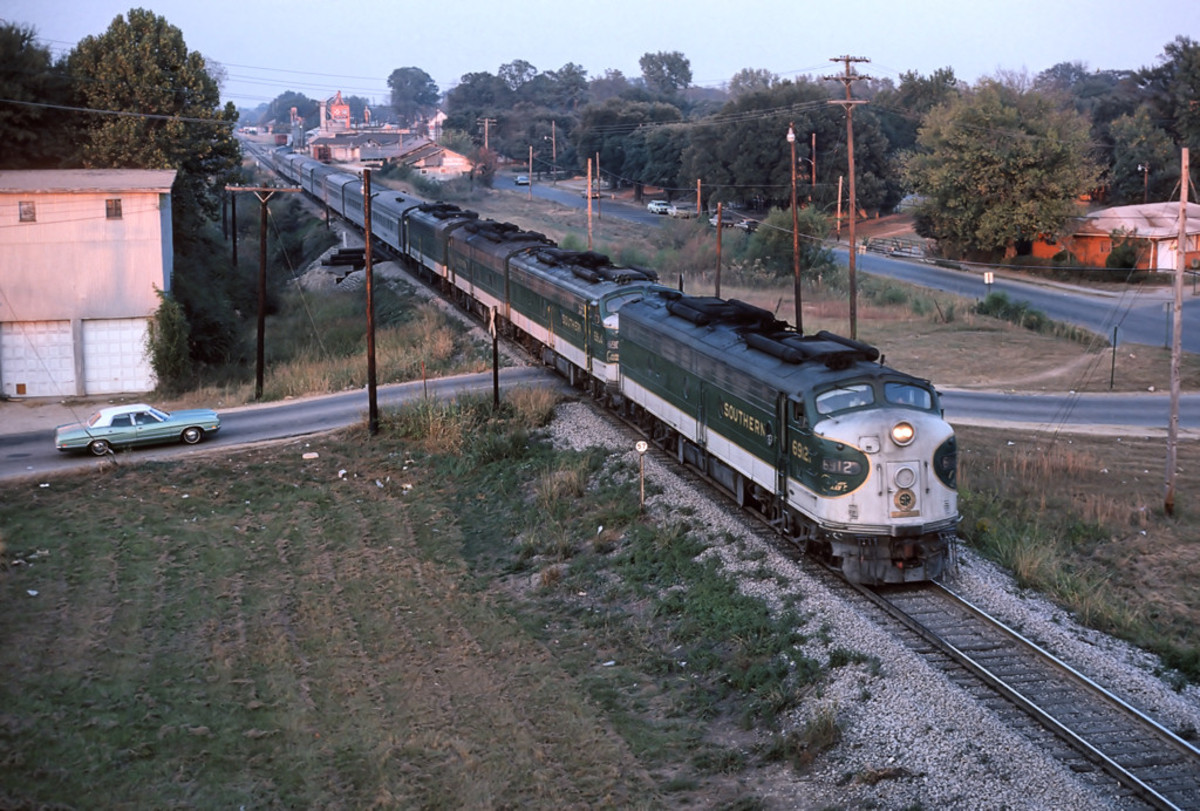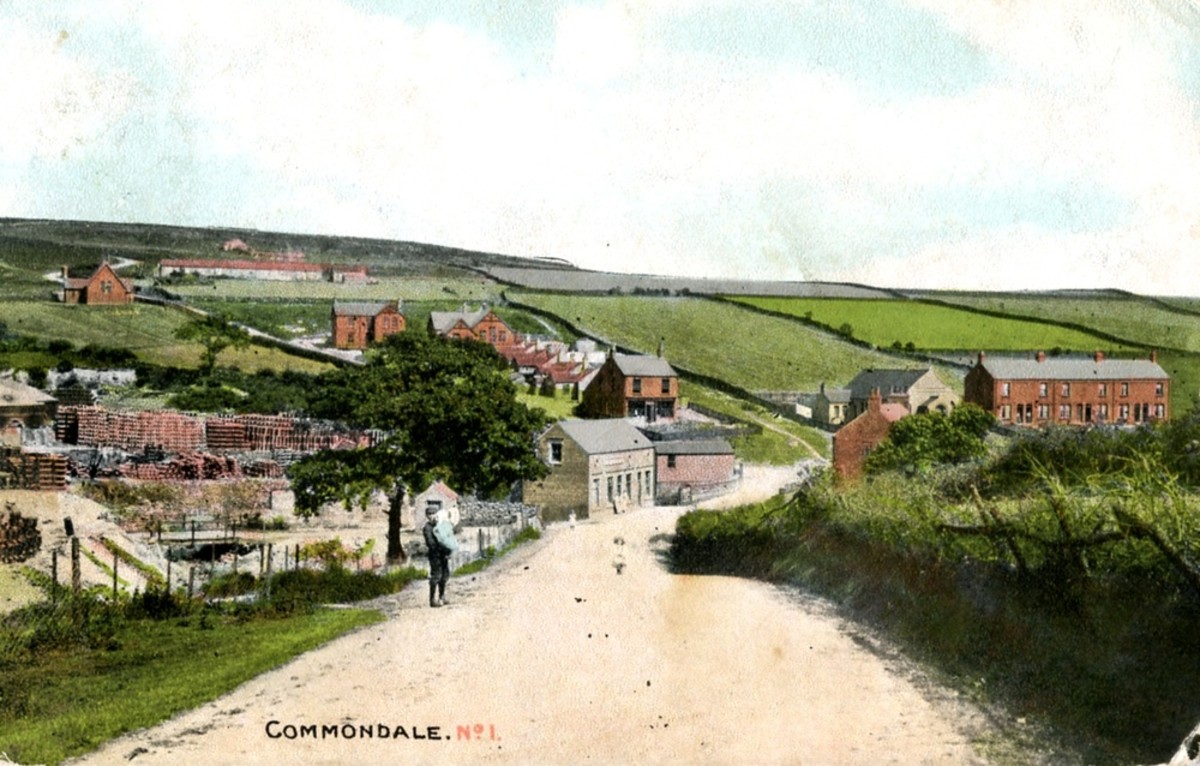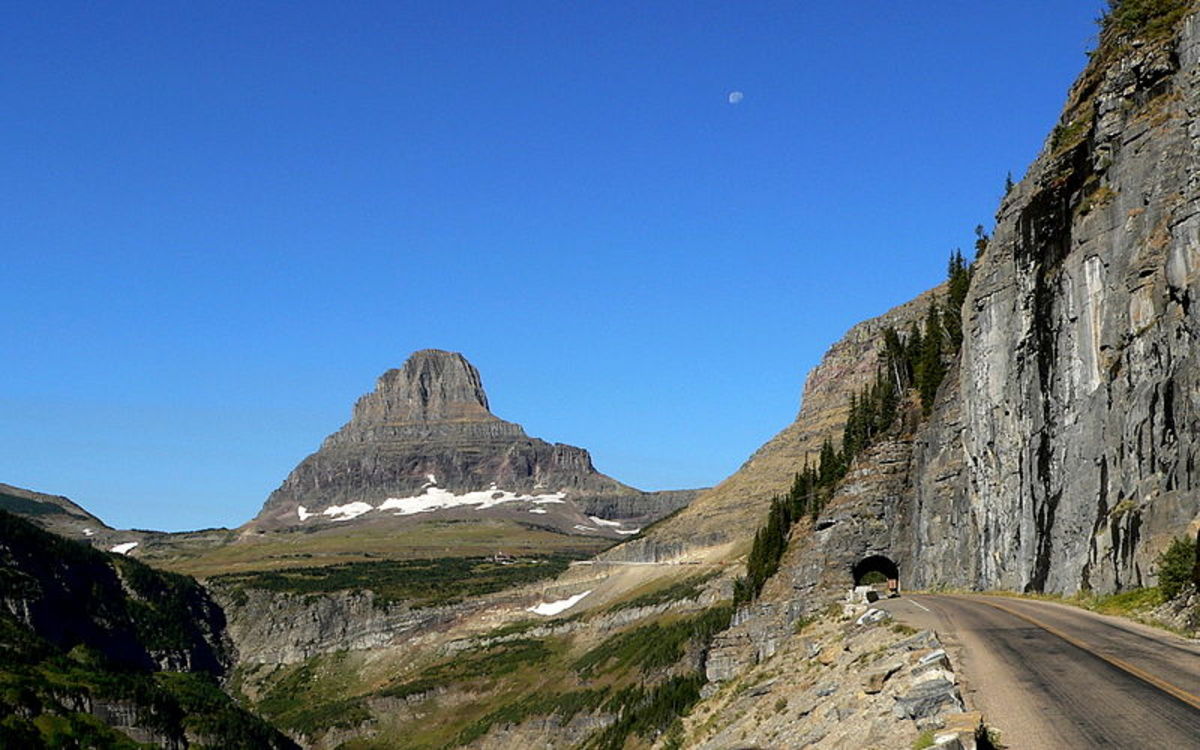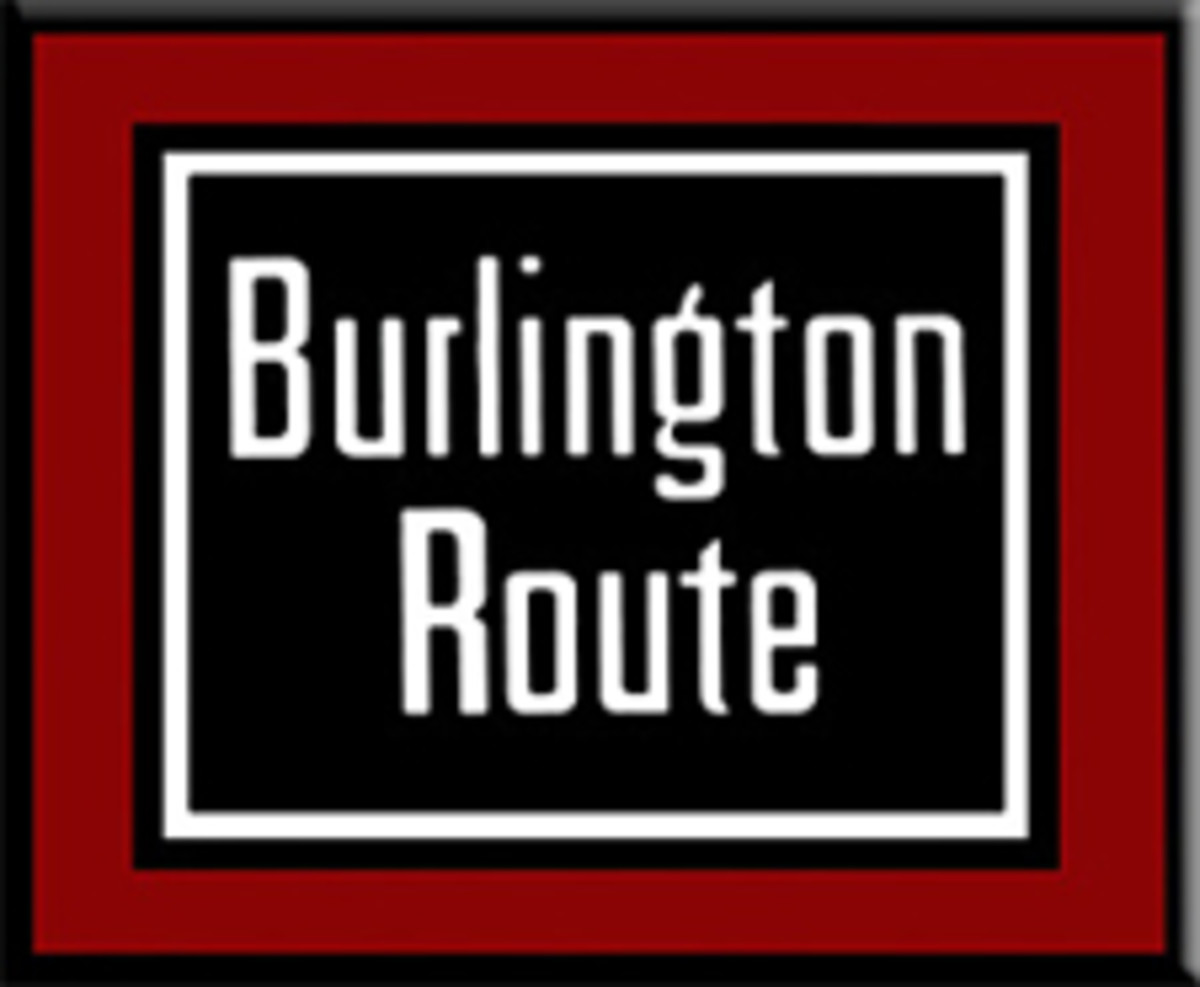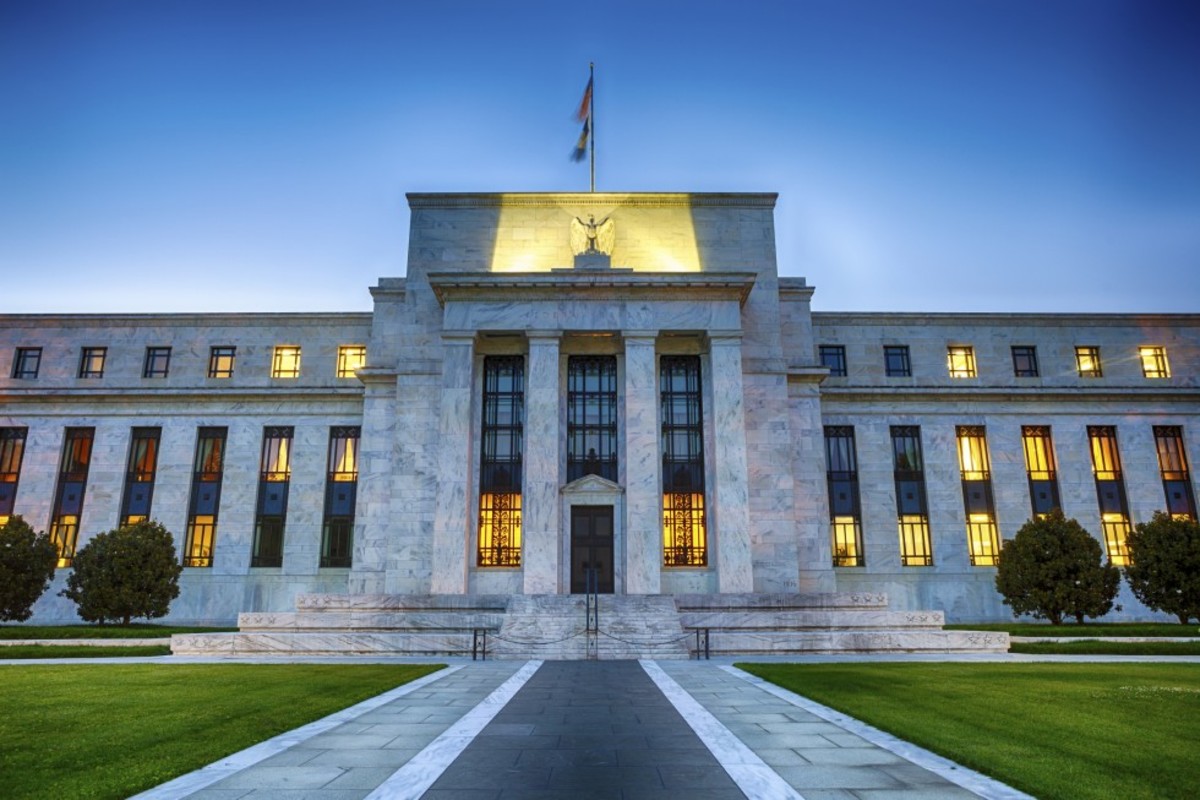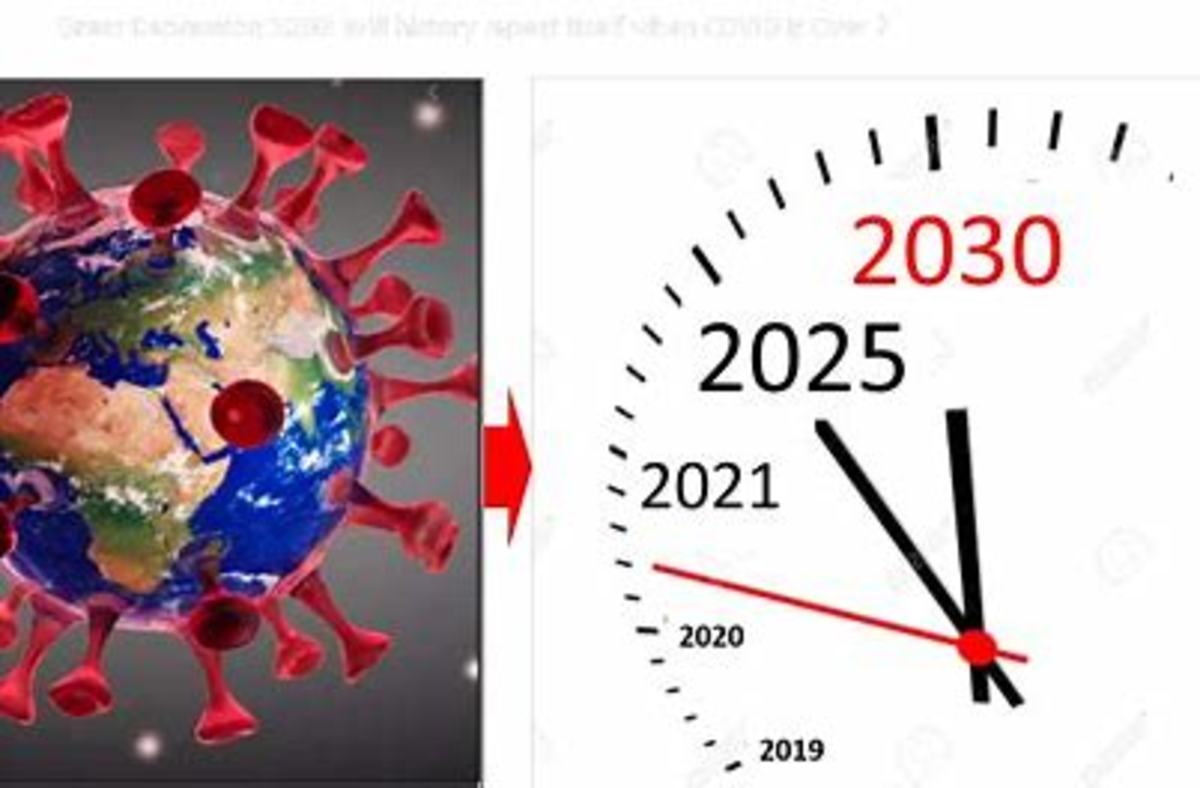History of the Great Northern Railway
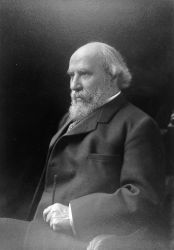
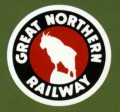

James J. Hill
The Empire Builder was born in Rockwood, now Ontario, Canada in 1838. He was named James Jerome Hill.At the young age of 18, headed to New York to get on a trans-atlantic ship, not getting on one, he headed back home, but stopped in a small city on the Mississippi River called St Paul. Realizing the last ox cart train had already left for the north, he became a clerk at a river boat company and worked his way up to be the best agent.
At the same time there a railroad that had been started by a charter from the Minnesota Legislature to build a railroad from St Paul to St Anthony (Minneapolis). The St. Paul and Pacific started building west but went bankrupt. James Hill and his partners bought the bankrupt St/ Paul and Pacific in 1883. This purchase was the beginning of what would become one of the largest Empires, not coming to an end until 1995.
Building West
The newly reorganized St Paul, Minneapolis and Manitoba, with Hill at the helm started building. Hill started out intending to connect the namesake cities, with a line through the Red River Valley. Hill was also building west into the Dakota Territory.By the end of 1885, the St P M&M had over 1460 miles of track in Minnesota and the Dakota Territory.
Hill and the St P M&M started making their way west reaching Montana in 1887. Using 10,000 men and working for two years. Once they reached Sun River, the Montana Central, a railroad a consortium of Hill associates had built, to reach Helena. Hill wasn't finished quite yet, even though he completed the original charter of the St Paul and Pacific.
As the railroad built west, every few miles a branch line spun off to serve the newly settled land. These branch lines would feed the bottom line for years to come, as wheat and corn were shipped to markets in the east.
Hill changed the name of his railroad to the Great Northern in 1891. There is a point four miles west of Havre where the line swings south to Great Falls, that Hill started the Pacific Extension.
Pacific Extension
The next move for Hill was to head to the Pacific. At Pacific Junction the Great Northern started building west, Hill wanted his railroad to be the shortest, quickest route, and hired John F. Stevens. Stevens was a railroad locating surveyor that had worked on the Duluth South Shore and Atlantic (DSS&A) a railroad that was built from Duluth Minnesota , across the upper peninsula of Michigan, to Sault (pronounced SOO) Saint Marie Michigan, predecessor of the SOO LINE. Stevens was in charge of finding a route over the Continental Divide in the Rocky Mountains. He found it after his Indian guide turned back, it was winter of 1889 and Stevens had to stay the night on the mountain before heading down to report back that he found the pass, soon to be known as Marias Pass. The line skirts the southern boundary of what is now Glacier National Park and drops down into Whitefish. The Great Northern built into Spokane across the pan handle of Idaho. This stretch was hilly but not top the extent that the Rockies and the Cascades were. The line started the climb over the cascades in Wenatchee following the Wenatchee River then Nason Creek up the east side of the Cascades. John Stevens located this pass in 1888 and the line was built through it in 1889. It was named Stevens Pass in honor of Steven's accomplishments. Following the Skykomish River on the western slope through Monroe and to Everett WA. This is where Hill bought the subsidiary Seattle and Montana, that was building from Everett north. This line eventually reached Sedro Wholley and and met with the Fairhaven and Southern that built south from Bellingham WA. My Blog about History in Whatcom County talks about the history from Mount Vernon to Bellingham.
Glacier National Park
The Great Northern Railway was a catalyst in creating Glacier National Park in the early 1900s. James Hill saw this beautiful area and realized that others would want to visit too. How else to get there but on the Great Northern, who's main line skirts the southern boundary of the park. The railroad operated extra cars on exsisting trains, the Oriental Limited and others. They would drop off the cars at Essex.
The railroad also built a lodge at the east entrance of Glacier Park, aptly named Glacier Park Lodge. The lodge is situated across the road from the station, and is a great jumping off point for adventures in Glacier National Park. there are also buses that give tours of the park. The red buses have been a fixture in the park for the last 50 + years, and are of historical interest in their own right.
Another place to stay may be of more interest to the railfan, is the Izzak Walton Inn in Essex. Essex was and still is a railroad town. Essex is located half way between Whitefish and the eastern entrance of Glacier National Park. Essex is on the western slope of Marias Pass and was and still is a helper terminal. Izzak Walton in was built by the Great Northern as a crew hotel. The view from the Inn is over the mainline and the lead to the small yard. The Empire Builder stops in Essex and the owners of the Inn will close the desk to drive guests the quarter mile to or from the station. I recommend the Izzak Walton Inn for those who like railroads and history.
The Worst Disaster
Th Great Northern's worst disaster happened in February of 1910. It had been one of the worst winters on record with record snowfall in the Cascades.For 10 days in late February it was pretty much endless snow, which meant there is a threat of avalanches all up and down the line. Trains are being held in Everett and Wenatchee Washington and let through depending on if the snowplows could clear the line enough. There is one eastbound and two westbounds that were allowed to follow snowplows up the mountain to the town on the west side of the cascade tunnel named Wellington. At that point they were stuck, both sides of the past had been closed in by snowstorm again and there's no way they could go either way. The threat of avalanches were very real. The cruise thought about pushing one of the trains back into the tunnel, which would save them from avalanche but then they may die from asphyxiation. Since there had never been an avalanche the exact spot that the trains were sitting in the yard, the decision was made to leave them in place. Unfortunately, there always has to be first time and that time was 11:30 that night when avalanche came down and swept the passenger and mail trains into the gully below. The disaster was so great that passenger traffic declined over the route, as people were scared that it may happen again. Because of the backlash from the disaster, the railroad changed the name from Wellington to Tye, the name of the river that flows through the area. If you were to go through the area today you'd be able to see the path of the avalanche itself, and walk the original mainline on the Iron Goat Trail.
In 1929 the current tunnel at 7.8 miles long was completed allowing Great Northern to pass over or through the cascade Mountains in relative safety. Today Stevens Pass ski resort is within snowballs throw of the original mainline and is affected by heavy snows just like in 1910.
Today US Route 2 follows the BNSF the former GN over Stevens Pass, and as you are at the summit of Stevens Pass you can see the cut in the mountain across the valley and Windy Point where so many men worked tirelessly to free the line from old man winter.
Passenger Service
The Great Northern, just like any other railroad of the day operated passenger trains over most of its lines. It did so to be able to move the newly arrived immigrants that came over to settle the recently opened prairies of the Dakota, Montana and Oregon territories. The new immigrants that populated this area became the first citizens of North Dakota, Montana, Idaho, and Washington States. Passenger service in the mid 1900s had pulled back a bit because the automobile was making inroads.
The Great Northern had passenger service between Duluth and Minneapolis Minnesota. It operated the Gopher and Badger, which were named after the state animals of both Wisconsin and Minnesota. It also offered a night express covering the same route. These trains operated in a "pool' fashion with trains from the Northern Pacific and SOO LINE. They operated over their own tracks, but tickets were interchangeable between railroads.
West from the Twin Cities, the Great Northern operated locals to Minot North Dakota. The Oriental Limited, named for the Oriental Trade. In the Cascades, between Seattle and Spokane, the Cascadian was the local passenger train. It would provide the RPO or Railway Post Office for these small towns. On the line from Seattle through Everett to Vancouver BC the Great Northern operated two or three round trips daily. They operated under different names such as "Puget Sounders", Internationals (named Morning, Noon and Evening).
South of Seattle there was a very interesting operation between Seattle and Portland. The Great Northern, Northern Pacific and Union Pacific operated a pool service over Northern Pacific trackage. Each railroad ran two roundtrips daily until the mid sixties when the GN dropped to one round trip daily. The night train was rotated every two months between the three operators. The trains met the Southern Pacific trains coming up from California and the Uniion Pacific trains from Salt Lake City.
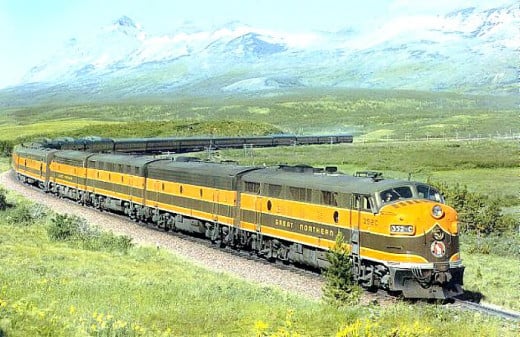
Empire Builder
The Empire Builder was inaugurated on June 11th 1929, named for James Hill. It replaced the Oriental Limited. The train was pulled by one of the 2500 class 4-8-4 Northern type locomotives on the Great Northern and the same type on the Chicago Burlington and Quincy, the Great Northerns friendly connection.
The Empire Builder was numbered #1 and #2 Later renumbered 31 & 32 to align with the Burlington's numbering system and was the premier passenger train on the line, bumping the Oriental Limited from the premier spot
Depending on the time of year the consists could be as long a 15 cars in the summer or as short as 12 cars in the winter. Consists can be found here. The final version, the incomparable Empire Builder had 4 Great Domes and a Dome Lounge. This Dome Lounge was a full dome and was only bought by the Great Northern, Santa Fe and Milwaukee Road,
From the beginning the Empire Builder was a very popular train, running from Minneapolis to Seattle, In the early thirties a Portland section was added over the Spokane Portland & Seattle as well as extended to Chicago over the Burlington Route. The SP&S operated a coach diner and sleeper along with the run through cars from the Great Northern. from Spokane to Portland
Electric Territory
The electric operation started in 1909 when the Great Northern built the first 2.5 mile tunnel from Wellington to East Portal, at Wellington there was a yard and an office. This tunnel was in use for 20 years when the current Cascade tunnel was built and put in service in 1929. Also in 1929 the electrified district was extended to between Whenachee and Skykomish Washington, a distance of about 63 miles, the elevation dropped by about 1000 feet and the new tunnel was 7.79 miles long. The GN used the 1926 built Z-1 class electric motors to augment the original motors (these were not assigned a class). The Z class was the most numerous at 10 units. As tonnage grew as well as the number of trains operated over the pass, more motors were added to the roster.
The largest electric motors on the Great Northern were the massive W class, at 5000 h.p they were also by far the most powerful. These two motors were built to eliminate the need for multiple units at the front end. It was an awesome site when there was a W class up front and Y and Z classes as helpers climbing the 2.2% grade.
The electricity was turned off permanently in 1956 when exhaust fans were installed at the eastern portal, allowing for diesels to go through the tunnel. The blowers are still used today, requiring 30 minutes of blowing after each train, restricting the line to 48 trains a day.
Railroad Towns
The Great Northern, along with all the railroads that populated the west created all the towns along their lines. The Great Northern built a number of towns, some of which are still alive and kicking today, and are still railroad towns. Others have grown up around the railroad but have not stayed around the railroad. An example of a railroad town that is still a railroad town is Whitefish Montana. Whitefish is in northwest Montana on the Great Northern's main line. It was and is the jumping off point for a trip to Glacier National Park. The Great Northern Railway built through Whitefish in 1890 and the station that is now partly a museum was built in 1927, replacing an older structure. The BNSF railway offices on the second level, and the Empire Builder still calls twice a day, and this station is the busiest station en route. The Great Northern donated one of the rarest locomotives, an NW 5 #181 to be displayed at the station.
Havre Montana, on the northern Montana plains is another railroad town that the Great Northern built. Havre, named for the French town, was built in 1888, and was a division point for the railroad. All trains stopped here to change out crews and locomotives. Many trains were broken up and rebuilt for different destinations. A line to Great Falls Montana branches off from this point as well. Havre is the 1000 mile mark from Chicago and is where both freight and Amtrak swap out locomotives for their 1000 mile inspections.
At the station, sits GN 2584 a P-2 Class 4-8-4 Northern. This class of locomotive was built to pull the 1929 version of the Empire Builder. Today it watches over the daily arrival and departure of Amtrak's version of the famous train.
There are many more railroads towns across the country, such as Denver Colorado, and Cheyenne Wyoming, and many many more. These towns were built by the railroads for their purposes and most are still viable communities. To see if your town was once a railroad town; look back in it's history, if there was a railroad though town, was there a yard? Engine facilities? These are some indications these towns were built by the railroads, for railroad purposes. If not it was built as a settlement for locals to send out freight to distant markets.
End of the line
The Great Northern was a pioneer in many aspects but most importantly they settled the northern states. The Great Northern not only settled the area, but they taught the settlers how to farm and raise cattle in the area. The railroad was helping the new settlers by providing animals, and education on how to farm the land. The Great Northern, Northern Pacific, Chicago Burlington & Quincy and the Spokane Portland & Seattle merged in 1970; realizing James J Hill's dream of the roads he controlled be merged into one railroad, the Burlington Northern Railroad.
"Every man has his great adventure, this Railroad was mine."
James J Hill 1912 upon stepping down as chairman of the Great Northern Railway.
Great Northern Items
© 2012 Clayton Hartford


